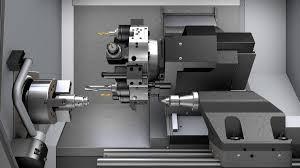Notifications

7 minutes, 27 seconds
-10 Views 0 Comments 0 Likes 0 Reviews

Injection molding is a widely utilized manufacturing process for producing custom parts in a variety of industries, from automotive to medical devices. It’s a versatile, cost-effective method that allows for precision and efficiency when creating complex and high-volume components. By injecting molten material into a mold, the injection molding process ensures that parts are made with tight tolerances, high quality, and durability. This article will explore the many advantages of the injection molding process for custom manufacturing.
The injection molding process is renowned for producing parts with exceptional precision. One of the primary benefits of using injection molding for custom manufacturing is the ability to achieve highly accurate and repeatable components. The molds used in injection molding are typically crafted to extremely tight tolerances, which ensures that every part produced is identical, making this process ideal for producing parts that require exact specifications.
Moreover, the injection molding process allows manufacturers to incorporate intricate details, complex geometries, and various features into a single part. This is achieved without the need for additional post-production processes or assembly steps, resulting in higher overall quality and less waste. The use of high-quality materials further contributes to the durability and performance of the finished parts, making injection molding the preferred choice for industries that demand reliable and long-lasting components.
One of the most significant advantages of the injection molding process is its cost-effectiveness, especially when it comes to high-volume production runs. While the initial setup costs, such as the creation of molds, can be high, the cost per unit decreases dramatically as the production volume increases. This makes injection molding an ideal solution for producing large quantities of custom parts at a lower cost.
The efficiency of the injection molding process also helps to reduce labor costs and overall manufacturing time. Automated machines can carry out most of the process, reducing the need for manual labor and speeding up production. Once the mold is created, it can be used for millions of parts with minimal wear and tear, further enhancing the cost-effectiveness of the process. For businesses looking to scale up production while maintaining quality and reducing costs, injection molding is a highly attractive option.
Another major advantage of the injection molding process is its compatibility with a wide range of materials. From metals and thermoplastics to elastomers and bio-degradable plastics, the injection molding process can accommodate various types of materials, making it suitable for numerous industries, including automotive, electronics, healthcare, and consumer goods.
The flexibility of injection molding also extends to the design and functionality of the parts. Manufacturers can use different types of polymers, composites, or even mixed materials to create parts with specific properties, such as increased strength, heat resistance, or flexibility. Furthermore, colorants can be added to the materials during the injection molding process, allowing for aesthetic customization, which is particularly beneficial for consumer-facing products. This versatility makes injection molding an attractive solution for businesses with diverse product requirements.
Injection molding is known for its ability to minimize material waste, which not only makes it more cost-efficient but also more environmentally friendly. Unlike other manufacturing methods, which can produce significant amounts of waste material, the injection molding process uses only the amount of material needed to fill the mold. Excess material, known as flash or sprue, can be recycled, ensuring minimal waste is produced.
Additionally, the precision of the injection molding process helps reduce the need for additional processing, such as trimming, which can also generate waste. With the growing emphasis on sustainability and eco-friendly manufacturing practices, the ability of injection molding to produce high-quality parts with minimal waste is a crucial advantage. By opting for injection molding, businesses can lower their environmental footprint while maintaining product quality.
One of the most valuable advantages of the injection molding process is the ability to produce highly complex and intricate designs. With the use of sophisticated computer-aided design (CAD) software, manufacturers can create precise and intricate molds that allow for greater design flexibility. This enables businesses to experiment with various shapes, sizes, and structures that would be difficult or impossible to achieve with other manufacturing processes.
The injection molding process is also beneficial for rapid prototyping. In industries where speed to market is crucial, the ability to quickly produce prototypes and test them before committing to full-scale production is invaluable. Manufacturers can produce functional prototypes that closely resemble the final product, enabling them to identify potential design flaws and make necessary adjustments before the final mold is created. This reduces the risk of costly mistakes and allows companies to bring new products to market faster.
The injection molding process offers a multitude of advantages for custom manufacturing, including precision, cost-effectiveness, material flexibility, waste reduction, and design versatility. Whether you're producing high volumes of parts or developing complex, custom-designed components, injection molding can provide a reliable and efficient solution. With its ability to produce high-quality, durable parts at scale, it’s no wonder that the injection molding process continues to be a dominant force in the manufacturing industry. By leveraging the benefits of injection molding, businesses can enhance product quality, reduce production costs, and accelerate their time-to-market, giving them a competitive edge in today’s fast-paced business environment.

